I've found this test print: https://i.stack.imgur.com/mpoVO.jpg
It seems usable and tests different line widths and spacings. It comes from an article from some PCB-shop, http://www.pcbfx.com/main_site/pages/direct_etch/how_fine_a_line.html
EDIT: unfortunatelly, it was damaged with JPG compression. I have no idea what the PCB-shop authors were thinking of :( Anyways, I've found another one on this site: https://www.dr-lex.be/hardware/tonertransfer.html
I've inspected the lines at the upper half in GIMP and it seems OK, although the DPI could be a little better, as the finest line is just 1px@45deg so its heavily jaggy and probably no printer will print it "well". Except for that, this one test pattern as good for my test. I've spent lot of time on finding this, I'd probably do better my own in KiCAD instead of searching.. If you find a better one, please let me/us know!





